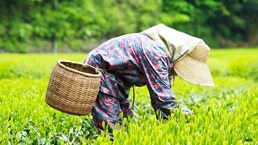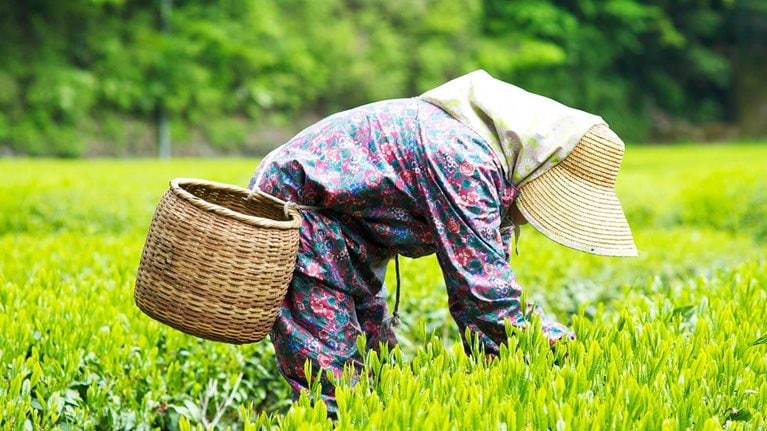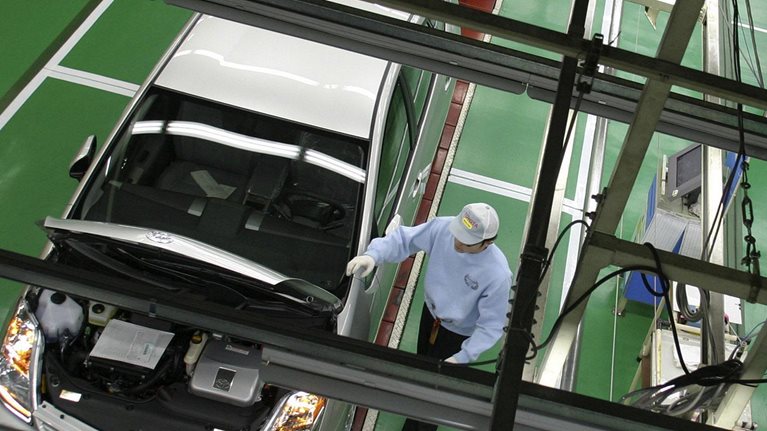Food security has been a hot topic of debate in recent years, and the Ministry of Agriculture, Forestry and Fisheries has defined Japan’s goal as “enabling all citizens to have access to quality food at reasonable prices now and in the future.” In order to achieve this goal and understand Japan’s food-security challenges, the country will need to take an objective look at the data that could shed light on the best path forward. The Food, Agriculture and Rural Areas Basic Act is premised on the idea that domestic agricultural productivity will be improved so that domestic production can be combined with appropriate levels of imports and stockpiles to ensure stable supplies of food. In the report Building a food-security strategy for Japan in an age of global competition, we examine domestic production, stockpiles, and imports, and use them as the basis for analyzing food security in the country.
Stay current on your favorite topics
For example, the conventional wisdom that population growth in Asia and Africa, along with rising incomes in large countries such as China and India, will lead to a global increase in food consumption and cause a tightening of the food supply is not backed up by data. True, major grain demand is expected to reach 3.1 billion tons globally in 2030—a 1.5-fold increase from 2010, but McKinsey research indicates that further acceleration is unlikely. China has led the global increase in meat consumption for the last ten years, but demand there is nearing the level of Western countries and is expected to level off; for cultural reasons, meat consumption in India is not expected to reach Western levels. Therefore, the kind of explosive growth the world has seen so far will probably not continue. Meanwhile, on the supply side, there is sufficient potential for production to rise in response to technological advances in developed countries, which will drive a variety of improvements, from better crop yields to increased land area under cultivation. A dramatic tightening of supplies is improbable, but prices will continue to have an element of instability because of the globalization of trade in food and the increasing environmental load on water resources and land.
As already noted, there are three basic tools to be used in achieving food security: domestic production, stockpiles, and imports. How these tools are balanced depends on the circumstances of an individual country. For present-day Japan, it will probably be difficult to maintain a varied and sophisticated diet just with domestic production and stockpiles. While both farms and farmland are in decline, efforts are being made to prevent a large drop in domestic production as new technologies promising more efficient production are gradually introduced. Even with these efforts, however, and even assuming that there is no tightening of the global supply and demand for food, Japan will need to strategically strengthen comprehensive food security, including imports, if it is to maintain the highly varied and sophisticated diet that its population presently enjoys.
Some agricultural products, such as wheat, corn, and fertilizer, are considered high-risk items that could hinder the future of Japanese food security (exhibit). Further, Japan is dependent on a small number of specific countries for imports, and import values are relatively high.

We used data to examine whether the country will be able to continue to stably import these items over the long-term. For emergency situations, defined as scenarios that clearly diverge from changes in supply and demand that can be reasonably forecast from historical trends and analysis of conditions at any given point in time, we posited cyclical risks, such as sharp rises in food and grain prices driven by macro factors; political risks, including policy changes in consuming and exporting countries; and natural risks, such as climate change. This resulted in the following seven risk scenarios for both ordinary and emergency conditions (see list below). Any consideration of Japan or any other country’s food security, however, must also study risk scenarios that take account of local diets, domestic production, import sources, and logistics, not just overall global supply and demand.
- Risk of water shortages and droughts in major agricultural countries (ordinary scenario). This risk is often associated with advanced agricultural countries and exporters from the Americas, and particularly Australia, where shortages of rainwater and irrigation water have become urgent and could result in short supplies of the primary grains for which Japan is reliant on imports.
- Lack of quality materials in less-developed agricultural countries (ordinary scenario). Countries such as Russia and Ukraine, which have significantly increased their grain production and exports in recent years, suffer from inadequate quality and quantity of materials crucial to agricultural production (such as seeds, agrochemicals, fertilizers, and agricultural equipment), which impedes further productivity gains.
- Production shortfalls due to climate change (emergency scenario). The countries that Japan relies on for imports are forecast to experience significant adverse impacts from climate change, raising the question of whether Japan will be able to adapt to the new trade flows that emerge.
- Lack of quality to satisfy Japanese demand (ordinary scenario). When searching for new import sources, only a very limited number of exporting countries are currently found to be able to ensure the quality of food demanded by Japanese consumers. Quality improvements in producing countries will be essential to diversifying Japan’s import sources.
- Lack of an export infrastructure in the Americas and less-developed agricultural countries (ordinary scenario). One of the biggest impediments to exports is an inadequate infrastructure for the transport of agricultural products, which is already a serious problem in places like Brazil. In the future, it may be necessary to consider new approaches in terms of both time and cost—for example, air routes from the Russian Far East.
- Inability to purchase due to a decline in Japan’s purchasing power (ordinary scenario). Japan’s share of global GDP continues to decline and is forecast to be roughly half its peak levels by around 2050. Given this decline in relative economic power, it may be necessary for the country to strengthen noneconomic aspects to secure the imports required to feed 100 million people.
- Political risks due to global food shortfalls (emergency scenario). A variety of scenarios should be examined; not just the export bans and protectionist policies that emerged during the crisis of 2008, but also temporary closures of export routes due to political friction.
In an attempt to find ways to overcome these seven challenges, we compared Japan to countries with advanced food-security policies. In discussions with numerous experts, we identified innovative initiatives being taken by Switzerland and Israel in response to their unique geopolitical situations, and believe they constitute best practices.
Having examined the data and identified the challenges confronting Japan, and having studied advanced food-security practices in Switzerland and Israel, we identified the following five key actions in charting a course for Japanese food security: positioning food security as central to Japan’s comprehensive security strategy, studying import strategies alongside domestic agricultural policies and stockpiling, actively gathering information and external insights to form objective diagnoses and shape actionable measures, managing external risks through interdependent relationships built on Japan’s strengths, and involving the private sector and Japanese society in food-security initiatives.
If this effort to ensure food security in Japan were to have a mission statement, we would propose the following: strengthen Japan’s food supply and procurement capacity by forging strategic partnerships to solve common challenges facing countries around the world. In other words, Japan can build on the benefits that it receives from the rest of the world in the form of enhanced food security by sharing its capabilities in areas where Japan plays a leading role on the world stage, such as in desalinization technology.

Strengthening Japanese agriculture to maximize global reach
Chapter 1 of the report uses data from both the demand and the supply sides to discuss the current situation of agriculture and food supplies around the world and changes in the global environment for food production and trade, seeking to answer the question of whether the supply–demand situation is as dire as is sometimes presumed. Chapter 2 analyzes current agricultural production in Japan and future forecasts to highlight the need for strategic initiatives regarding food imports.
Chapter 3, the core of this research, focuses on key high-risk products for Japanese food security (wheat, corn, and fertilizer). The chapter confirms supply and demand trends and identifies the challenges facing Japan in both ordinary and emergency circumstances. Chapter 4 analyzes the food-security strategies of Switzerland and Israel, which offer some hints on the way forward for Japan.
From this foundation, chapter 5 presents what we believe to be the desired end state for food security in Japan. Finally, chapter 6 identifies points for different classes of stakeholders to consider (government and corporate managers, as well as the public ) as the country attempts to achieve this desired end state.
Download the full report on which this article is based, Building a food security strategy for Japan in an age of global competition (PDF–5MB).


